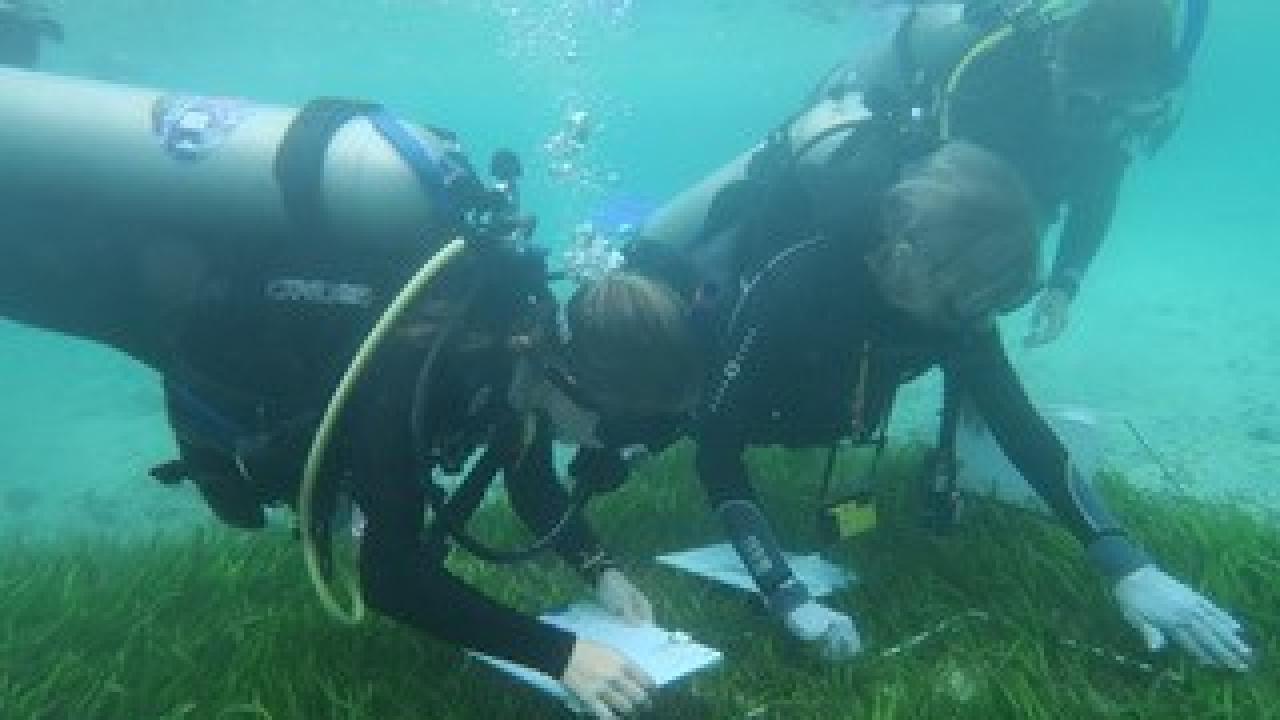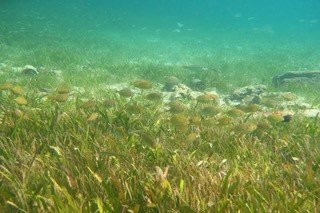
Seagrass Project Highlights New Paradigm for Marine Ecosystem Restoration
When it comes to protecting and promoting marine biodiversity, seagrass beds are vital to coastal health. They provide important habitats for fisheries species and protect shorelines from storm damage. But these habitats are under threat.
“Seagrass habitat is being lost at a rate of a football field’s area every half-hour, which threatens these important functions,” said Professor Susan Williams, Department of Evolution and Ecology in the UC Davis College of Biological Sciences.
In a study published in Proceedings of the National Academy of Sciences, Williams found that planting multiple species of seagrass accelerates marine ecosystem restoration, improving overall survival and growth of the transplanted seagrasses.
The findings represent a paradigm shift in conservation practices, which have previously focused on promoting ecosystem restoration by planting a single seagrass species, Williams said.
“Species richness is associated with many positive ecological attributes,” she said. “It just seemed counterintuitive to me. In these really species-rich areas, why would we plant just one species when naturally they grow in mixtures?”
The linked seascape
In 2012, Williams struck up a partnership with Indonesian scientists to study marine ecosystem restoration in the Coral Triangle, a highly biodiverse region in the Pacific that provides fisheries resources for more than 350 million people.
Coastal habitats in the Coral Triangle play off one another like musicians. If one habitat is out of tune, it affects the others. Mangroves on the beach, seagrasses along the coast and corals further offshore create an interlinked “triad of ecosystems,” according to Williams.
“Once the reefs go, there’s more wave energy that hits the seagrasses and uproots them,” said Williams.

“A disturbance to one is really a disturbance to the others in this linked seascape.”
While corals entice with candy colors, seagrass meadows, uniform in appearance, often go overlooked. But they serve vital functions, including protecting corals from pathogens and absorbing carbon dioxide from the sea.
In the study, Williams and colleagues planted six common Indo-Pacific seagrass species at four different species richness levels, from plots with a single species all the way up to plots with five species. Then they monitored the study sites for more than year.
“The more species we planted together, the better all of them survived and the better all of them grew,” Williams said.
A trajectory for success
Restoration is just the beginning when it comes to environmental conservation. To create a lasting effect, maintenance is of utmost importance.
“A product of our study is a planting, or restoration, guideline for the Indonesian government and NGOs,” said Williams. “We know how to establish these seagrasses best, but we also know that Indonesians, like everybody else, have to focus on reducing human disturbances to the shoreline.”
The study has implications for marine ecosystem restoration practices in states like Florida and Texas.
Contributors to the study include UC Davis graduate students Christine Sur and Jessica M. Abbott, along with Rohani Ambo-Rappe and Steven R. Limbong, of Hasanuddin University, Indonesia. The research was supported by the UC Davis Office of Global Affairs, the Agricultural Experimental Station at UC Davis, Mars Smybioscience, National Science Foundation and USAID.
